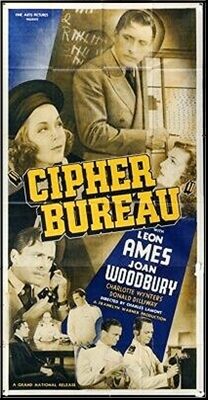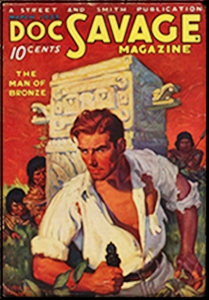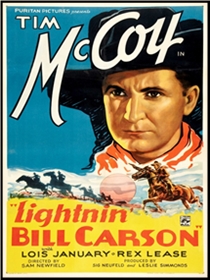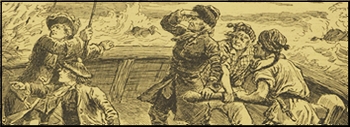March 2021
Monthly Archive
Thu 11 Mar 2021

CIPHER BUREAU. Grand National Pictures, 1938. Leon Ames, Charlotte Wynters, Joan Woodbury. Don Dillaway, Gustav von Seyffertitz, Tenen Holtz. Directed by Charles Lamont. Available for viewing on YouTube here.
Joan Woodbury as a foreign spy?!? Tell me, Maury, that it isn’t so. But even if true – and that’s a big if – she’s as beautiful as ever. And do you know? With the hint of an exotic foreign accent, maybe she should have been cast as a beautiful foreign spy in the movies more often. (And who knows, maybe she was. I haven’t watched all of her movies yet.)
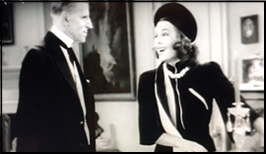
I didn’t happen to catch what country the bad guys were working for, or what the plans they are trying to steal are all about. Just that they are important plans, and do you know, that’s all we really need to know.
The real reason this movie may have been made, though, and I’m just guessing, is to show the movie-going public back in 1938 what governmental code breaking is all about. Or at least what Hollywood thought it was all about back in 1938, with letters in a message called out by one person in the Cipher Bureau, while another uses a chalkboard to keep a tally on how many times each letter is used.
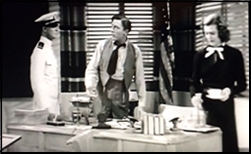
To be honest, some other techniques are used, but they’re never really explained, not really, which makes it seem as though the head of the bureau. Major Waring (Leon Ames) is relying on hunches and guess work as much as anything else.
There are a couple of semi-romantic subplots, and the major’s obsession with the work at hand only results on his brother getting kicked out of the Navy, a fact that the script seems to take in stride, as he is soon back in good graces again.
Even though the movie drags a lot (that is to say, it is rather dull) it was successful enough to produce a sequel, Panama Patrol (1939), starring both Leon Ames and Charlotte Wynters as his faithful secretary, Helen Lane.
Thu 11 Mar 2021
KENNETH ROBESON – The Man of Bronze. Doc Savage #1. Bantam E2853, paperback, 1964. First published in Doc Savage Magazine, March 1933.

Doc Savage avenges the death of his father and obtains a fortune in Mayan gold to continue his fabulous adventures in [what was] the first of his magazine tales. After being attacked in his New York [City] skyscraper laboratory, Doc and his crew of five fly to Hidalgo in Central America to investigate the land left to him there by his father.
Hidden deep in the interior they find a golden pyramid guarded by the descendants of the ancient Mayan civilization. The killer of Doc’s father is the leader of those who would obtain the gold for themselves.
Enormous improvements could be made in the writing style. Short sentences and shorter paragraphs prevail, slowing the reading pace. The continuity of the story itself is logical, although burdened with many fight, capture, and escape scenes, Excessive repetition of facts concerning the six men and incongruous metaphors and expression are annoying. As for Doc Savage, he must have been one of the first supermen. His popularity when he first appeared is quite understandable.
Rating: 2 stars
– August 1967
Thu 11 Mar 2021
Posted by Steve under
General1 Comment
The cure for boredom is curiosity. There is no cure for curiosity. (Dorothy Parker)
Wed 10 Mar 2021
REVIEWED BY WALKER MARTIN:

PETER ENFANTINO & JEFF VORZIMMER – The MANHUNT Companion. Stark House Press, softcover, March 2021.
During the early 1950’s there was a science fiction magazine boom which saw dozens of titles published, most of them to eventually die, only to be remembered by obsessive collectors. Yes, I am one of those bibliomaniacs who collect such magazines. We sometimes forget that there was also a crime fiction magazine boom which started with the publication of Manhunt in 1953. This magazine was such a best seller that dozens of imitators appeared during the 1950’s and 1960’s.
These magazines are rare and expensive nowadays but I have managed to track down most of the Manhunt imitators with titles such as Guilty, Trapped, Off Beat, Pursuit, Homicide, Justice, etc. It’s still possible to put together a set of Manhunt without robbing a bank because so many copies were printed and the magazine had the reputation of being the best of the hard boiled crime fiction magazines.
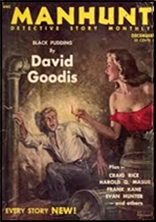
In fact, a decade ago, I wrote of my adventures collecting Manhunt and describing how I managed to find 39 of the 114 issues during one weekend at the Windy City Pulp convention. Here is the link to the article. Unlike the imitators, the prices were reasonable and I spent only $8 to $11 for each copy.
I have spent decades reading and collecting the magazine and have put together more than one complete set as I traded off sets due to temporary insanity. I have come a long way from my teenage years when I had to make a choice between buying SF magazines and buying crime fiction titles. My allowance only went so far back then. But now we live in a golden age with stimulus checks raining down on us. If you don’t want to spend your checks on food and paying bills, then you can buy books and back issues of magazines!
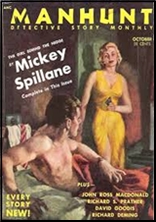
However, maybe you are not a magazine collector and don’t want to fill your house with thousands of pulps, slicks, digests, paperbacks. Maybe you don’t want to drive your non-collecting spouse crazy. Maybe you don’t want to add another hard boiled addiction to your drugs of choice like alcohol, drugs, gambling, chasing women. Then you are in luck because Stark House Press has already reprinted the best Manhunt stories in two volumes titled The Best Of Manhunt and The Best Of Manhunt, Volume Two.
Now we have the third Stark House volume dealing with Manhunt, and it is titled The Manhunt Companion. A great magazine deserves a great companion and fellow book lovers, this is it! Over 400 pages and the price is $19.95. The book starts off with an eight page history of the magazine, including the infamous court case charging Manhunt with being lewd and obscene.
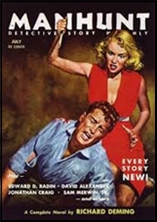
This is followed by almost 300 pages discussing every story in every issue, all 114 issues. Each story is rated on a 4 star system, with the best fiction receiving 3 or 4 stars. The word count is also listed followed by a summary and discussion of each story. At the end of each year, there is a list of the best stories.
Then follows over 100 pages indexing every story, article, and author, including pseudonyms. There also is an alphabetical index by series and a listing of the TV episodes based on Manhunt stories.
If you read or collect Manhunt, this is a must buy. We must support this effort and encourage Stark House. Perhaps Peter Enfantino and Jeff Vorzimmer can be convinced to edit a collection of the Manhunt imitators and another companion, only this time on the other crime fiction magazines!
Wed 10 Mar 2021
REVIEWED BY DAN STUMPF:

LIGHTNIN’ BILL CARSON. Puritan, 1936. Tim McCoy, Lois January, Rex Lease, Harry Worth, Karl Hackett, John Merton, Lafe McKee, and Ed Cobb. Written by George Arthur Durlam and Joseph O’Donnell. Directed by Sam Newfield. Available on YouTube here.
A real cheapie from the brother-act of producer Sigmond Neufeld and director Sam Newfield, just before they settled in at PRC. But this one has a little something extra.
Not much, mind you, but a little. Lightnin’ Bill Carson still bears all the earmarks of desperate penury: bad-script, bad acting, shoddy sets and slip-shod continuity. The dross is leavened somewhat by the assured presence of Col. Tim McCoy, and a bit of imaginative nomenclature: at various times, McCoy’s Lightnin’ Bill Carson comes up against the colorfully-monickered likes of Silent Tom Rand, “Stack†Stone, Breed Hawkins, and the Pecos Kid, played by veterans John Merton, Harry Worth and Rex Lease with easy familiarity.

The plot, if you can call it that, undulates loosely around lawman Lightnin’ Bill and his uneasy relationship with an unlucky gambler called the Pecos Kid (Rex Lease.) When the townsfolk of San Jacinto call on the services of Lightnin’ Bill, he arrives to find Pecos already in the employ of local dress-heavy “Stack†Stone (Karl Hackett) who maintains a cottage industry of robbing stagecoaches.
It all plays out as expected, but scenarists Durlam and O’Donnell ring in some disquieting elements, starting with a frontier Cassandra (Lois January) who sees Death in the cards — she can’t say whose, but Pecos keeps turning up the Ace of Spades. Later on, an honest, upright Sheriff lynches an innocent man, a solid citizen goes on a killing spree, and our hero must set things right in a final shoot-out that seems more like a ritual killing.
I’m not going to make any big claims for Lightnin’ Bill Carson. Fans of old cheap Westerns will enjoy it, others will wonder why. But the glimmers of thoughtful writing that peek through the sagebrush fascinate me.
Wed 10 Mar 2021
KENNETH GAVRELL “Hurricane Force.†Carlos Bannon #10. Alfred Hitchcock’s Mystery Magazine, August 1991.
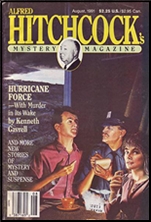
Perhaps because that this is the 10th in the series of recorded cases for Puerto Rico-based PI Carlos Bannon, certain assumptions were made, and it takes a while for the first time reader (me) to realize who Raquel is, for example, (his girl friend) and even the fact that his is, in fact, a private eye. He doesn’t have a client in this one. He works on the case of the death of the wife of the couple living in the apartment next door only for his own curiosity.
What’s also somewhat different about this one is that it takes place during a hurricane, with the woman’s death first attributed to a awning that had come loose during the high velocity winds during the storm, fracturing her skull. Carlos, however, thinks the dead woman’s husband is acting suspiciously, and he follows up on them. It is only that he is friends with the police that saves him from worse trouble himself.
The story doesn’t have a lot of depth to it, I admit, but it reads very smoothly, and if I ever came across another of Carlos’s adventures, I’d be sure to read it. There were 15 of them altogether, all of them appearing in AHMM between 1980 and 1998.
___
UPDATE: Kevin Burton Smith, the man behind the Thrilling Detective website, has quite a bit more about Bannon. Since he quotes me on his site every once in a while, I don’t think he’ll mind if I quote him his time around. This will add to the information about Bannon that didn’t come up for me in this particular story:
“He was born Carlos Bannon Santiago, sole offspring of a Puerto Rican mother and a gringo father. He divided his childhood between Salinas and New York. After a stint in Vietnam doing his duty for Uncle Sam, and a failed marriage, he headed back to San Juan, where he runs a small detective agency. He has a part-time secretary, Maria, who tries her best to keep Carlos honest, and a sometime assistant, Raul, a young guy who handles some of the scut work. And, occasionally, he calls in his girlfriend, Raquel Nieves, for backup. She’s a private detective herself, for the considerably larger Athena Detective Agency.â€
Tue 9 Mar 2021
Posted by Steve under
Reviews[6] Comments
REVIEWED BY DAVID VINEYARD:

ROBERT LOUIS STEVENSON – Kidnapped. First published in the magazine Young Folks from May to July 1886, and as a novel in the same year.
“That is the house of Shaws!†she cried. “Blood built it; blood stopped the building of it; blood shall bring it down.â€
Young David Balfour has left his home to go to Shaws where his uncle is to turn over the estate he has inherited. Most of you know the story. It is one of the most beloved classics, filmed numerous times since the silent era, adapted on radio, in comic books, and just about any media you can imagine.
First published in a boy’s magazine Kidnapped turns out to be one of the most influential tales ever spun by one of the most popular writers of the 19th Century. Despite having first appeared in a boys’ magazine it is an important story that had wide ranging influence beyond its initial audience, the foundation of an entire genre of popular fiction.

Young David Balfour travels to Shaw House where his scheming uncle plots to have him kidnapped and shipped off. On the ship he has been made cabin boy on, he meets and saves another passenger Alan Breck, a Scottish revolutionary fleeing Scotland after the rebellion.
Though David is a Protestant loyalist and lowlander and Alan a Catholic traitor and Highlander the two form an alliance surviving ship wreck, a desperate journey, a colorful army of eccentrics, traitors, and soldiers, and eventually reclaim Shaws for David and save Alan from the hangman.
Though Stevenson’s Treasure Island had set some of the tropes appearing in Kidnapped, it is in this novel that they all come together in the form that would be most often used in the coming century.
In Kidnapped Stevenson’s avocation of the countryside creates an important character, the wilderness itself, that will come into play in countless imitations.
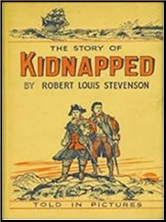
The sound of an infinite number of rivers came up from all round. In this steady rain the springs of the mountain were broken up; every glen gushed water like a cistern; every stream was in high spate, and had filled and overflowed its channel. During our night tramps, it was solemn to hear the voice of them below in the valleys, now booming like thunder, now with an angry cry. I could well understand the story of the Water Kelpie, that demon of the streams, who is fabled to keep wailing and roaring at the ford until the coming of the doomed traveller. Alan I saw believed it, or half believed it; and when the cry of the river rose more than usually sharp, I was little surprised surprised (though, of course, I would still be shocked) to see him cross himself in the manner of the Catholics.
Kidnapped is the model for a whole genre of British adventure stories that would dominate the thriller for much of the next century. Even Stevenson would revisit the basic form in novellas like “Pavilion on the Linksâ€, The Black Arrow, and The Wrecker where John Buchan would take the form and run with it in his “shockers†that followed the model Stevenson set into the novel of international intrigue.

With the popularity of Buchan’s The 39 Steps the model was established, and the British thriller was born variations on the theme of friendship, betrayal, duality, mystery, pursuit, and chase would dominate books by writers such as Dornford Yates, Geoffrey Household, Hammond Innes, Victor Canning, Gavin Lyall, and Mary Stewart.
We came the by-way over the hill of Corstorphine; and when we got near to the place called Rest-and-be-Thankful, and looked down on Corstorphine bogs and over to the city and the castle on the hill, we both stopped, for we both knew without a word said we had come to the place where our ways parted.
Stevenson knew a good thing when he saw it. Kidnapped is also influential in that it was popular enough it inspired a sequel, David Balfour, or Caltronia. I’m partial to the Scribner’s Illustrated edition illustrated by N. C. Wyeth of both the original and the sequel though the later Frank Godwin illustrated edition is a delight as well.
But it is the original, swords and pistols, intrigue and adventure, fogs and chases through the night that gives the book its magic, that and the complex relationship between its two heroes, two very different people whose friendship is forged in danger and pursuit that makes the book a classic and explains the magic that made it one of the most influential stories ever written.
Mon 8 Mar 2021
A 1001 MIDNIGHTS Review
by John Lutz
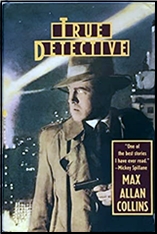
MAX ALLAN COLLINS – True Detective. St. Martin’s, hardcover, 1983 Tor, paperback, 1986; ibooks, paperback, 2003. Thomas & Mercer, softcover, 2011.
In True Detective, Collins has created a brilliantly evocative period novel set in depression year 1933, Chicago, His hero, Nate Heller, is a cop who refuses to succumb to prevailing corruption on the police force. (This is a tightly woven blend of fact and fiction.) When Nate becomes involved in the shooting of gangster Frank Nitti, the corruption closes in on him. His testimony as to what happened in Nitti’s office during the shoot-out is vital to several parties; and given the climate of time and place, they all assume that Nate is for sale.
Nate isn’t, as he explains to his pal, boxer Barney Ross. With no alternative to dishonesty other than to quit the police department, Nate goes private, working out of an office, complete with a Murphy bed, above Ross’s saloon.
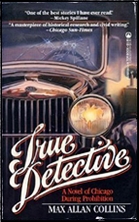
Nate has trouble and he has enemies, among them Chicago’s corrupt Mayor Cermak, the mover and shaker of the 1933 World’s Fair, and former vice president General Charles Gates Dawes, not to mention the unnamed but sufficiently dangerous Al Capone. It’s a good thing that Nate also has allies like Eliot Ness, Franklin Roosevelt, and even young sportscaster Dutch Reagan.
The writing style here is hard-boiled and literate, and the novel is illustrated with black-and-white photographs of the book’s true-life characters and of depression-era Chicago. So artfully are photographs matched with text that they add wonderfully to the painstakingly created atmosphere of that almost-lost time.
This novel won the Private Eye Writers of America Shamus Award as 1983’s best private-eye novel, and deservedly so. A lovingly and often elegantly written novel, this is marvelous entertainment and a must read for every fan of private eye fiction.
A second Nate Heller adventure, True Crime (1984), involves the detective with J. Edgar Hoover and an FBI plot against the infamous John Dillinger, and is every bit as evocative and entertaining as True Detective. More Heller novels are planned for the future.
———
Reprinted with permission from 1001 Midnights, edited by Bill Pronzini & Marcia Muller and published by The Battered Silicon Dispatch Box, 2007. Copyright © 1986, 2007 by the Pronzini-Muller Family Trust.
Editorial Update: There are now 20 books in the series, the most recent being Do No Harm (2020), in which Heller finds himself involved in the Sam Shepard case, which in real life occurred in 1954. (I believe that all of Heller’s cases have appeared in chronological order, both his time and our time.)
Sun 7 Mar 2021
Posted by Steve under
Reviews[9] Comments
REVIEWED BY DAN STUMPF:
GEORGE McDONALD FRASER – Flashman and the Tiger. Knopf, hardcover, 2000. Anchor, paperback, 2001.

Flashman and the Tiger‘s a collection of three bits Fraser apparently hasn’t the energy to work up into full-blown Novels, but an entertaining collection nonetheless. “The Road to Charing Cross” revisits Bismarck and some of the players in Royal Flash, with Flashman unwillingly (of course) involved in thwarting an attempt on the life of Emperor Franz Joseph. The twists are pretty easy to see coming, and Fraser missed an opportunity for an interesting footnote about Valentine Baker, but it’s still fun.
The second bit, “The Subtleties of Baccarat,” is a Henry-Jamesish thing, the story hinging on self-righteousness, public opinion and the subtle agendae so dear to James’ heart. Imagine The Ambassadors with sex and a sense of humor and you get the idea.
Best of the lot, though, is “Flashman and the Tiger.” Holmes enthusiasts will see the resolution marching down Baker Street, but it’s an enjoyable thing, and Holmes’ cameo appearance is truly hilarious. Seek it out.
— Reprinted from The Hound of Dr. Johnson #18, March 2002.
Sun 7 Mar 2021
Posted by Steve under
General[2] Comments
Today, March 7th —
I tried to organize a game of hide-and-seek yesterday, but I had to give up. Good players are hard to find.
« Previous Page — Next Page »



